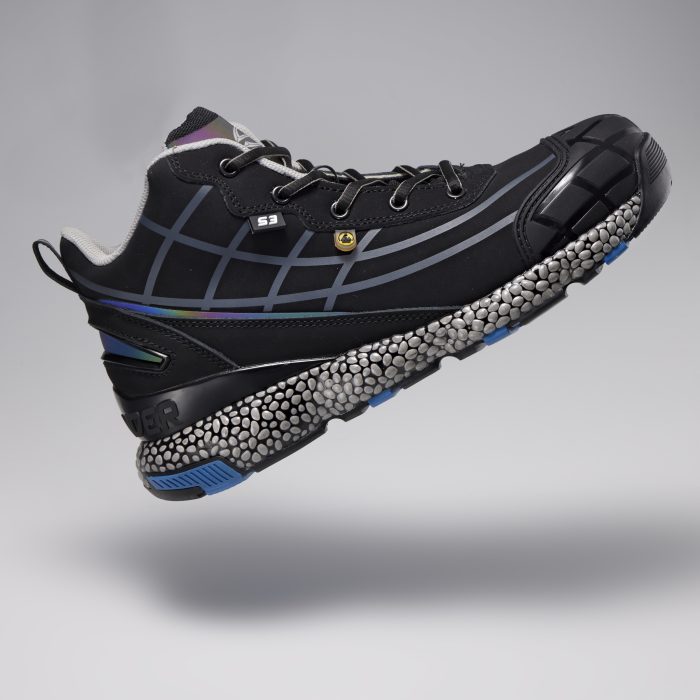Work shoes are mainly divided into two categories, based on certain safety requirements:
Safety shoes certified according to EN ISO 20345 (with a protective toecap against impact with an energy of up to 200 J or a compression load of up to 15 kN) and work or professional footwear, certified according to EN ISO 20347 (without a protective toecap, but in any case manufactured in accordance with the basic requirements relating to durability, comfort and harmlessness of the materials).
Both safety and professional footwear must assure slipping resistance with specific protection concerning the reduction of the slipping hazard on wet surfaces, divided into three levels: SRA (test carried out on ceramic floor covered with water and detergent), SRB (test carried out on steel floor covered with glycerine) and SRC (both tests described above, SRA + SRB).
In addition, supplementary protection may be required against specific risks (mechanical, chemical, physical and electrical risk), such as: antistatic properties, energy absorption in the heel area, sole resistance to hydrocarbons, water penetration and absorption through the upper, penetration resistance of the outsole, heat or cold insulation, metatarsal protection etc.
The main levels of intended protection are as follows:
SB: Minimum requirements. Toecap with a resistance of 200 Joules.
SBP: SB + puncture resistant midsole (P).
S1: SB + antistatic properties (A), Energy absorption in the heel area (E), the closed heel area, and hydrocarbon resistant sole.
S1P: S1 + puncture resistant midsole (P).
S2: S1 + penetration resistance and water absorption through the upper (WRU).
S3: S2 + puncture resistance midsole (P) and deep sole grooves.
S4: S1 (only valid for footwear made entirely of rubber or class II polymer) + resistant to hydrocarbons (FO).
S5: S4 + puncture resistance midsole (P) and deep sole grooves.
Safety footwear
S3
Work shoes are mainly divided into two categories, based on certain safety requirements:
Read more
S3
Sort by
- Product name
- Product code
Filters
Filters

Safety footwear
- Low cut safety shoes
- Ankle high safety shoes
- Safety boots
- Special protection shoes
- Sporty safety shoes
- Lightweight safety shoes
- Winter safety shoes
- Water repellent safety shoes
- S3
Fastening system
- Free Lock
- Laced
- Velcro
Shoe fit
- Regular
- Wide
Puncture resistant midsole
- Steel
- Composite
Safety level
- S3
- FO
Toe cap
- Steel
- Fibreglass
Upper
- Leather
- Textile
Sole material
- EVA/Rubber
- PU/PU
- PU/Rubber
EN Standard
- EN ISO 20345 (Safety footwear)
Seasonality
- Winter
Shoe type
- Low cut
- Ankle high
- Safety boots
- Special protection
Special features
- HI
- HRO
- Metal Free
- WR
- CI
Slip resistance
- SRC (SRA+SRB)
Other features
- Lightweight
- Sporty
- Water repellent
